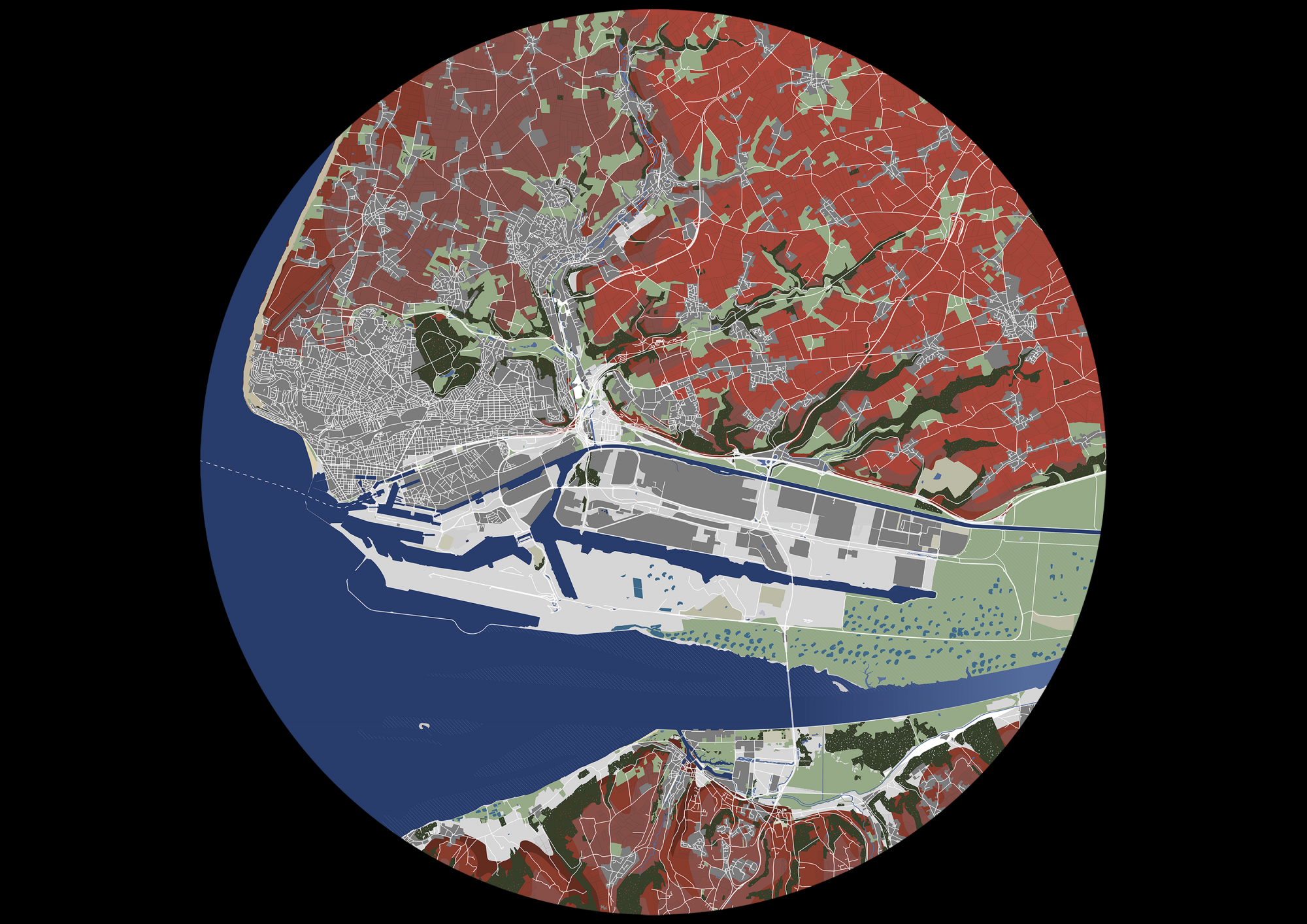Master 1 et 2
Architecture et Experience
Before the flood - A world in Le Havre
Éric Lapierre

SITES




SALT WATER FARMING
Margot Sustar, Soline Lengaigne, Thibaut Vilcoq





OYSTER FARMING
Mariam Bedraoui Drissi, Nelu Dragomir, Casey Isidor





ATHLETIC CLUB OCTOPUS GARDEN
Guillaume Grégoire, Arianna Migliarino, Lucas Nény





BODYCARE SOLARIUM
Gregoire Lortie, Laura Neumann, Louis Chessé





CANNERY
Enzo d’Auria, Gabriel Flor de Oliveira, Melhing Roselet






CASINO
Maxence Lelievre, Sarah Rodriguez, Lucas Vaudoux





BOAT REPAIR
Flore Derouen, Mariana Monteiro, Victor Payen





LE HAVRE SORTING CENTER
Helena Kocik, Bouchra Larbi Bouamrane, Gabriel Santos





CANAL MAINTENANCE
Anne Branchereau, Sirine Damir, Axel Eugene





LIBRARY
Khadija Barkani, Myriam Berthier, Shaojun Luo, Eva Morin





LE HAVRE MARKET
Sophie Corty, Claire Fachetti, Inssaf Zinelabidine





ANOTHER BRICK
Simon Cheritat, Valère Hoguait, Cynthia Tréport





CLIFFSIDE SWIMMING POOL
Agathe Convert, Alexis Da Costa, Camille Perillat





RESTAURANT
Antoine Jellimann, Mathilde Mahoudeau, Augustin Michel





LE HAVRE CITIZEN SCHOOL
Maxence Heidet, Clément Paillon, Marie Przopiorski de Cay, Quentin Toulemonde





LE HAVRE ROWING CLUB
Angela Da Silva, Ange Lemée, Théo Miquel





ATTIC
Kelly Chhour, Loic Castelotto, Thibaut Ruiz





PERFORMING ARTS CENTER
Célia Codja, Solène Frémont, Yasmine Majber





OCEANOGRAPHIC RESEARCH CENTER
Florian Brehin, Flore Daurel, Clémence Hugues





Architecture et Experience
Before the flood - A world in Le Havre
After having tested the hypothesis to build a world in Arc-et-Senans, Guise, Clairevivre and Firminy, we settle this year in the city of Le Havre.
We are interested in this city for many reasons and particularly for its capacity to condense several dimensions able to inform the projects. Due to its singular geographic position, at the estuary of the Seine, Le Havre is one of the most important European ports. Built at the beginning of the 16th century, the growth of the port goes alongside with the fast economic development of the city and the rise of pre-industrial brick and tile workshops. Some see this port as the entrance port to Paris, like the Piraeus for Athens. Le Havre is at the crossroad of landscapes, in-between land and see, the Seine and the Channel, clear and saltwater, giving it a special quality. Thus, the city is also imbued with the imaginary of Perret who actively participated to the post-war Reconstruction.
Nevertheless, its geographic situation is also the sword of Damocles of Le Havre. Following the most pessimist projections of the IPPC (GIEC), the average water levels could rise by one meter until 2100. This rise of water levels increases the risk of water submersions, permanent or temporary, the risk of coastal erosion, increases salt intrusions into coastal aquifer, thus increases the risk on coastal and port infrastructures. Le Havre is then on the frontline facing environmental issues that makes it a representative subject to study the question of the coastal fringe. This question is even more relevant that by the year of 2040, in France, coastal regions could gather a third of the population.
By the interest on the coastal fringe landscape, the aim of a world in Le Havre is to evaluate the consequences of such a situation on the architecture and how this situation opens a huge field of experimentation that leads us to question the definition of architecture. In other words, the question is to understand how the architectural form could be deeply redefined in relation with the environmental issues and then generate unexpected results. Environmental imbalances create a strong paradigm shift that forces us to radically think about our relations to the territory, the construction, the mobility, the uses, etc. and thus to define new balances within the architectural form. In addressing the subject of environmental issues through the means of architecture, we affirm our attachment to the definition of architecture as a knowledgeable and exploratory discipline while outlining the contours of a possible disciplinary approach of the environment in order to propose new standards of comfort.
These explorations on the definition of the architectural form and new standards echoes with the work of Perret for the Reconstruction of Le Havre. He developed the “Immeuble standard” or “Appartement modulaire” both based on the use of a constructive grid of 6,24 meter offering at once standardization of the construction and flexibility of uses in order to “inscribe city in measure, like a musical harmony”, to use his words.
|JURY|Architecture & Experience|
|----|----|----|----|
|Eugeni Bach (Bach architects, Barcelone – Curateur de la XVème Biennale espagnole d’architecture et d’urbanisme – ETSAB)
Thomas Bellouin (Architecte, enseignant chercheur, Paris – ENSA Paris-Est)
Tristan Chadney
Antoine Collet
Sophie Dulau (Paysagiste et architecte, Paris – ONG Klima)
Laurent Esmilaire
Ambra Fabi
Mariabruna Fabrizi
Éric Lapierre
Fosco Lucarelli
Sébastien Marot
Véronique Patteeuw (Rédacteur scientifique OASE – LACTH – ENSAPL – Visiting Professor EPFL)
Anna Rosellini (Historienne et architecte – Université de Bologne – EPFL – ENSA Paris-Est)
Claire Vernhes (Meat Architectures et Territoires, Paris – ENSA Paris-Est)|Tristan Chadney
Antoine Collet
Laurent Esmilaire
Ambra Fabi
Mariabruna Fabrizi
Éric Lapierre
Fosco Lucarelli
Sébastien Marot|